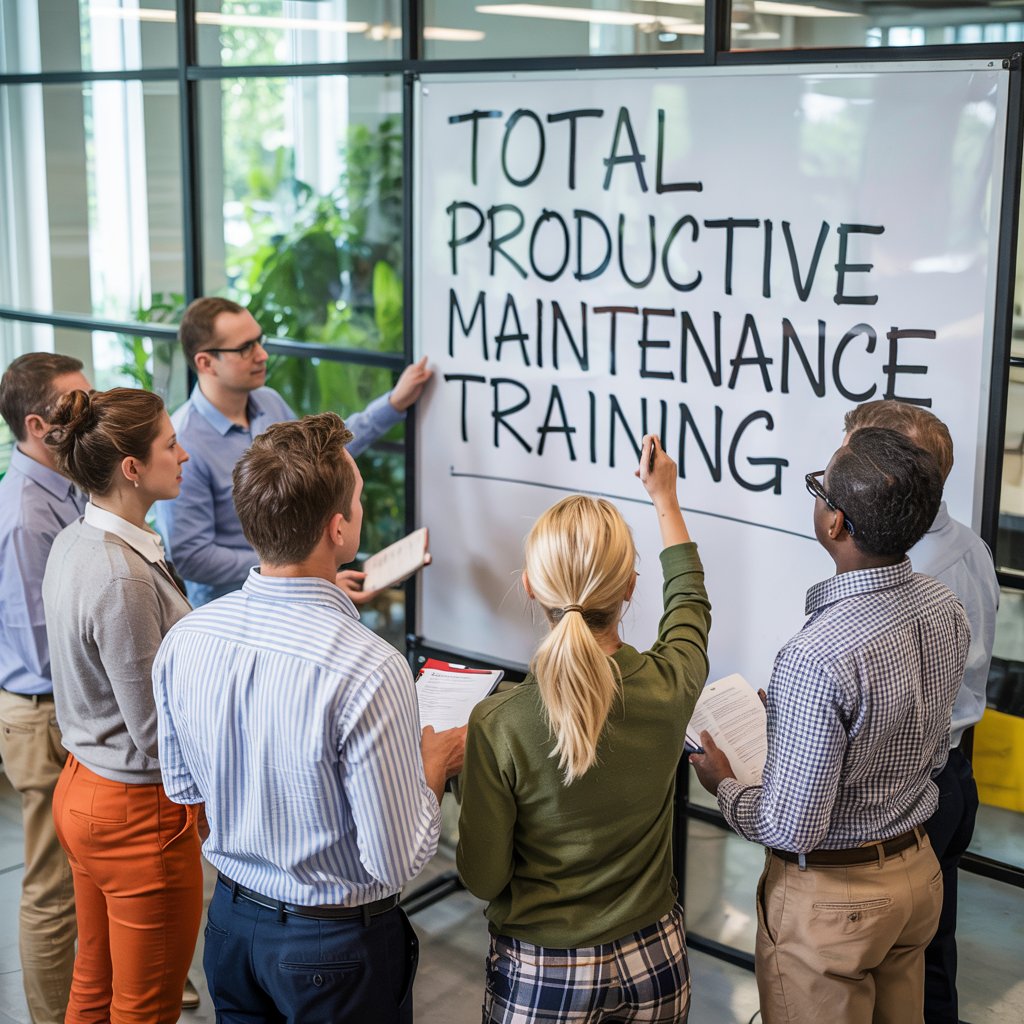education

April 14,2025 • 5 min read
From Reactive to Proactive: Transforming Maintenance with TPM

In the fast-paced world of manufacturing and operations, equipment breakdowns can result in significant losses—both in productivity and revenue. Traditionally, many organizations have relied on reactive maintenance, only addressing issues after machinery fails. While this approach might seem cost-effective in the short term, it often leads to increased downtime, higher repair costs, and a culture of firefighting rather than foresight.
Enter Total Productive Maintenance (TPM)—a powerful methodology that flips the script by encouraging proactive and preventive maintenance, empowering operators, and promoting a culture of continuous improvement. At Unichrone, we believe that understanding and implementing TPM can revolutionize how businesses approach equipment maintenance and productivity.
What is TPM?
Total Productive Maintenance (TPM) is a holistic approach to equipment maintenance that aims to achieve perfect production with zero breakdowns, zero defects, and zero accidents. Developed in Japan and widely adopted across industries, TPM focuses on engaging all employees, from operators to top-level management, in maintaining and improving production equipment.
Rather than isolating maintenance as a responsibility of the maintenance department alone, TPM distributes the responsibility across the workforce, transforming maintenance into a shared activity and an integral part of daily operations.
Reactive vs. Proactive Maintenance: What’s the Difference?
Reactive Maintenance:
-
Fix-it-when-it-breaks mentality
-
Unplanned downtime
-
Higher emergency repair costs
-
Increased wear and tear on equipment
-
Unpredictable workflow disruptions
Proactive Maintenance:
-
Prevent-it-before-it-breaks approach
-
Scheduled inspections and repairs
-
Reduced unplanned downtime
-
Longer equipment lifespan
-
Stable and predictable production schedules
By moving from reactive to proactive maintenance, organizations can avoid many of the costs and inefficiencies associated with emergency repairs.
How TPM Enables Proactive Maintenance
TPM is structured around 8 foundational pillars, each designed to drive proactive behaviors and system-wide improvements. Let’s explore how some of these pillars directly support the shift from reactive to proactive maintenance.
1. Autonomous Maintenance
Operators are trained to perform routine maintenance tasks such as cleaning, lubrication, and inspections. This empowers them to detect early signs of equipment failure and take immediate action—often preventing breakdowns entirely.
2. Planned Maintenance
Data-driven scheduling of maintenance activities helps anticipate wear and tear. By analyzing historical performance and failure patterns, teams can proactively plan interventions before problems arise.
3. Focused Improvement (Kobetsu Kaizen)
TPM encourages teams to continuously analyze and improve processes. This includes identifying chronic equipment issues and systematically eliminating the root causes, reducing the chance of recurrence.
4. Education and Training
By ensuring that all employees are trained to understand machinery and TPM practices, organizations build a culture of awareness and accountability. This proactive knowledge base is key to early problem detection and solution.
Benefits of Proactive Maintenance through TPM
Transitioning to TPM offers a wide range of benefits that extend beyond just equipment reliability:
1. Increased Equipment Availability
TPM significantly reduces unplanned downtimes. Machines are kept in optimal condition, and minor issues are addressed before they become major failures.
2. Improved Product Quality
Consistent machine performance leads to fewer defects, resulting in higher product quality and less rework or scrap.
3. Enhanced Safety
Regular inspections and maintenance reduce the likelihood of accidents caused by equipment malfunction.
4. Cost Savings
Preventive maintenance helps organizations avoid costly emergency repairs, reduce energy consumption, and extend the life of assets.
5. Employee Empowerment
Operators become more engaged as they take ownership of their equipment. This fosters a sense of pride and encourages problem-solving at the ground level.
Steps to Implement TPM in Your Organization
At Unichrone, we often recommend the following phased approach to TPM implementation:
Step 1: Secure Top Management Commitment
Leadership must fully understand and support TPM as a long-term strategy. Resources, training, and clear communication are critical at this stage.
Step 2: Conduct Initial Equipment Assessment
Evaluate current equipment conditions, failure rates, and maintenance practices. This provides a baseline for improvement.
Step 3: Launch TPM Awareness and Training Programs
Educate all levels of the organization about TPM concepts, benefits, and their roles in implementation.
Step 4: Establish TPM Teams and Set Goals
Create cross-functional teams for each machine or department. Define measurable goals such as reduced downtime or improved Overall Equipment Effectiveness (OEE).
Step 5: Roll Out the TPM Pillars
Begin with Autonomous and Planned Maintenance. Gradually introduce the remaining pillars based on organizational readiness and needs.
Step 6: Monitor, Improve, and Sustain
Use metrics to evaluate progress and identify opportunities for continuous improvement. Reinforce training, celebrate successes, and integrate TPM into the culture.
Overcoming Common Challenges
Implementing TPM is not without its hurdles. Organizations may face:
-
Resistance to change from operators or technicians
-
Lack of training or unclear role definitions
-
Inadequate data for planning maintenance schedules
-
Underestimation of long-term benefits
These challenges can be overcome through consistent leadership support, ongoing communication, and by showcasing early wins to build momentum.
TPM and the Future of Smart Manufacturing
As we enter the era of Industry 4.0, TPM is evolving. The integration of IoT sensors, machine learning, and real-time analytics enables predictive maintenance, a more advanced form of proactive maintenance. With smart devices monitoring equipment conditions in real time, organizations can anticipate failures with even greater accuracy.
TPM lays the groundwork for these digital advancements by building a culture of maintenance ownership and process discipline—two essential components of a smart factory.
Conclusion
At Unichrone, we specialize in delivering world-class training and certification programs to help businesses implement TPM and other operational excellence strategies effectively. Whether you’re just starting your TPM journey or looking to take it to the next level, we’re here to support your success.
Ready to transform your maintenance approach with TPM? Explore our TPM Training and Certification Programs at Unichrone.com and take the first step toward a more productive future.
Arpita Dey Details
User Profile
- Full name
- Arpita Dey
- Email address
- dey95.arpita@gmail.com
- Join Date
- 2025-04-14
- State
- City
- Pincode
- Address
- Follow us on Facebook
- Follow us on Twitter
- Website Name
- Bio